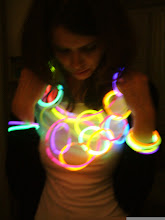I didn't really know much about Roni Horn until I read Jeanette Winterson's fantastic article about her work in the Independent magazine a few weeks ago. Her article was brilliant because instead of simply  delivering some type of verdict - a star rating or "this is good/bad", she actually went into what the artist is doing and how it works. Roni Horn uses text as imaginatively as she uses images and this article returned the favour, creating a piece of artwork itself, by describing the textures, the "curious sense of depth", and the "mutability and change" of the work.
delivering some type of verdict - a star rating or "this is good/bad", she actually went into what the artist is doing and how it works. Roni Horn uses text as imaginatively as she uses images and this article returned the favour, creating a piece of artwork itself, by describing the textures, the "curious sense of depth", and the "mutability and change" of the work.
 delivering some type of verdict - a star rating or "this is good/bad", she actually went into what the artist is doing and how it works. Roni Horn uses text as imaginatively as she uses images and this article returned the favour, creating a piece of artwork itself, by describing the textures, the "curious sense of depth", and the "mutability and change" of the work.
delivering some type of verdict - a star rating or "this is good/bad", she actually went into what the artist is doing and how it works. Roni Horn uses text as imaginatively as she uses images and this article returned the favour, creating a piece of artwork itself, by describing the textures, the "curious sense of depth", and the "mutability and change" of the work. Seeing the work itself it put me back in touch with my love of the river. I have been doing a phonography project recently recording the sound of the river thames. I have always loved rivers ever since paddling in the tiny stream at my grandmother's house in the Highlands. And she shares my playfulness - her pictures of the thames point out the different textures of the river, numbering every tiny event and creating words to decribe its impact. I wished the Tate hadn't put the photos in glass frames, so that the reflection wouldnt have been there to blur the textures of the water. Similarly her "paired gold mats" placed in the light coming from the river, follows the lines of the floor away from the flow, "like sun on the water".
 The idea of placing the glassworks in rooms immediately looking out on The Thames itself created a type of reflection of the flowing water below us, playing off the river itself and the lights shining on the water itself. If I had been curating this exhibition I would have given these sculptures their own space, separately from the drawings, and placed them in a more fluid relationship to the space in the rooms, to allow them to shine. Pink Tons is a huge block in glass, glittering with lines and shapes, reflecting the light from the Thames flowing below the Tate.
The idea of placing the glassworks in rooms immediately looking out on The Thames itself created a type of reflection of the flowing water below us, playing off the river itself and the lights shining on the water itself. If I had been curating this exhibition I would have given these sculptures their own space, separately from the drawings, and placed them in a more fluid relationship to the space in the rooms, to allow them to shine. Pink Tons is a huge block in glass, glittering with lines and shapes, reflecting the light from the Thames flowing below the Tate.The best part of the exhibition was the room "You are the weather" itself. The text attached to the photographs was as important - if not more so - than the pictures. The way there were presented was also very effective. Before viewing them we read a sign describing the subject of the photos (which were taken in pools across Iceland in rain, fog, wind and sun) as making expressions due to the weather conditions. "But when you are in the room with her it's as though you've provoked these responses, you become the weather". This adds a layer to the work - suggesting that the e
 xpressions may or may not be personal, may or may not be directed at the photographer and the relationship she has with the woman. Then there is another layer in the way the work is set out. Standing in the middle of the room, with all the photos of the woman and her different expressions surrounding us, it does feel that we are being watched by her, rather than watching her. And our faces change, mirroring our interpretations of her face, and our attempt to work out the mystery of what she is feeling, feeling the frustrations ourselves. I would like to video or photograph (or both?) the members of the public as they stand looking at these photographs, to track the expressions on their face in response.
xpressions may or may not be personal, may or may not be directed at the photographer and the relationship she has with the woman. Then there is another layer in the way the work is set out. Standing in the middle of the room, with all the photos of the woman and her different expressions surrounding us, it does feel that we are being watched by her, rather than watching her. And our faces change, mirroring our interpretations of her face, and our attempt to work out the mystery of what she is feeling, feeling the frustrations ourselves. I would like to video or photograph (or both?) the members of the public as they stand looking at these photographs, to track the expressions on their face in response. 
No comments:
Post a Comment